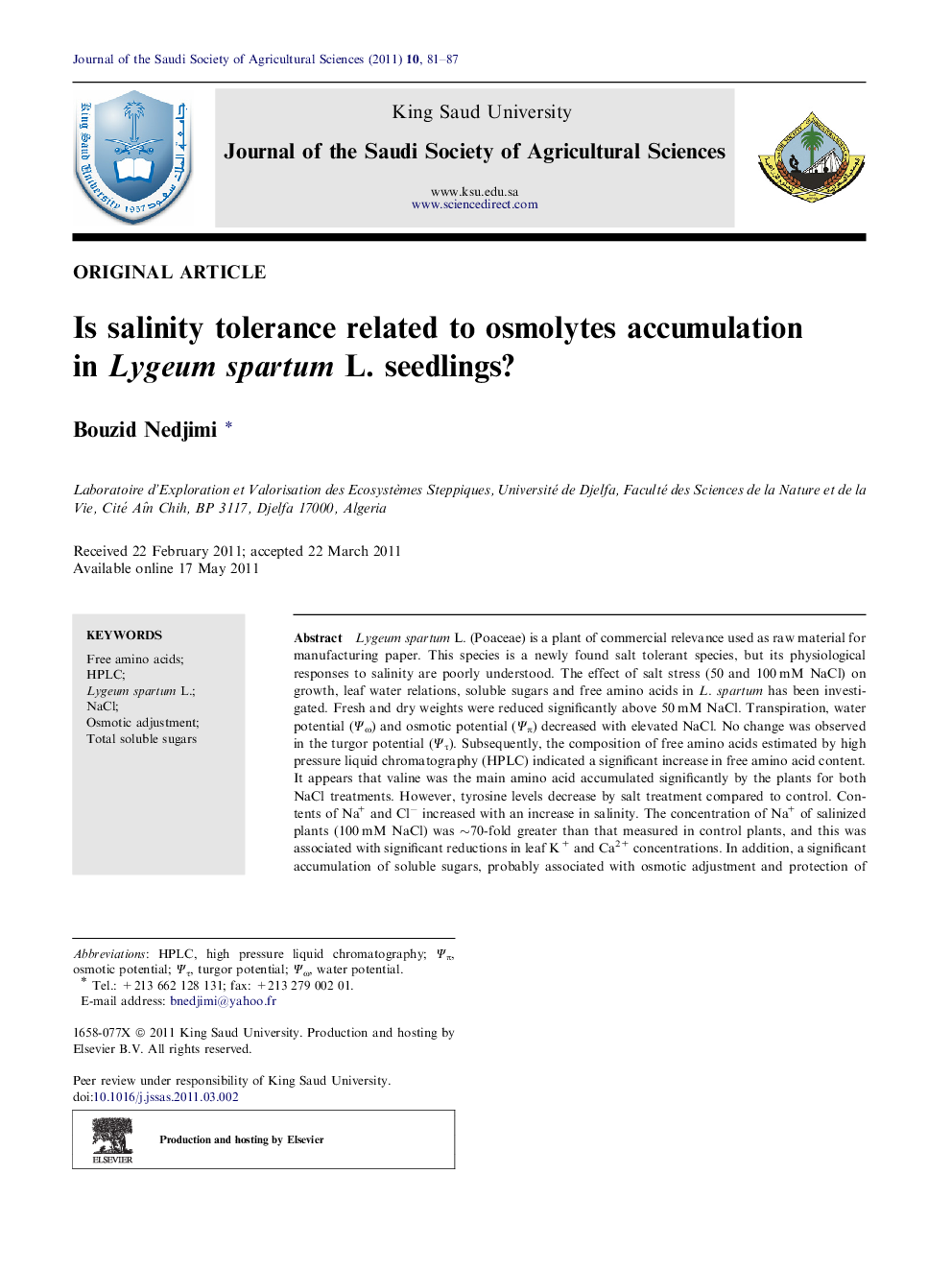| کد مقاله | کد نشریه | سال انتشار | مقاله انگلیسی | نسخه تمام متن |
|---|---|---|---|---|
| 4495624 | 1623740 | 2011 | 7 صفحه PDF | دانلود رایگان |

Lygeum spartum L. (Poaceae) is a plant of commercial relevance used as raw material for manufacturing paper. This species is a newly found salt tolerant species, but its physiological responses to salinity are poorly understood. The effect of salt stress (50 and 100 mM NaCl) on growth, leaf water relations, soluble sugars and free amino acids in L. spartum has been investigated. Fresh and dry weights were reduced significantly above 50 mM NaCl. Transpiration, water potential (Ψω) and osmotic potential (Ψπ) decreased with elevated NaCl. No change was observed in the turgor potential (Ψτ). Subsequently, the composition of free amino acids estimated by high pressure liquid chromatography (HPLC) indicated a significant increase in free amino acid content. It appears that valine was the main amino acid accumulated significantly by the plants for both NaCl treatments. However, tyrosine levels decrease by salt treatment compared to control. Contents of Na+ and Cl− increased with an increase in salinity. The concentration of Na+ of salinized plants (100 mM NaCl) was ∼70-fold greater than that measured in control plants, and this was associated with significant reductions in leaf K+ and Ca2+ concentrations. In addition, a significant accumulation of soluble sugars, probably associated with osmotic adjustment and protection of membrane stability, occurred in roots of salinized plants. Based upon these results, a possible physiological role of soluble sugars and free amino acids was suggested in L. spartum to maintain turgor.
Journal: Journal of the Saudi Society of Agricultural Sciences - Volume 10, Issue 2, June 2011, Pages 81–87